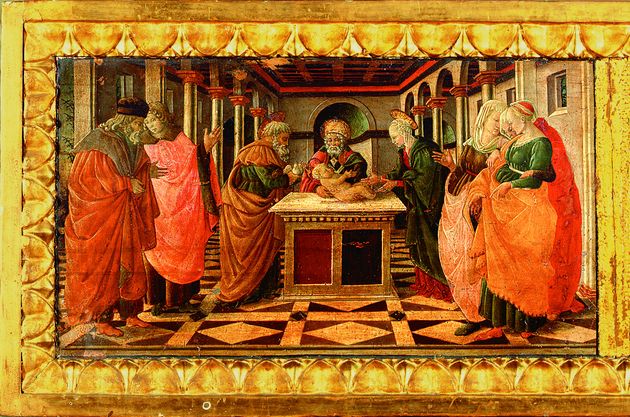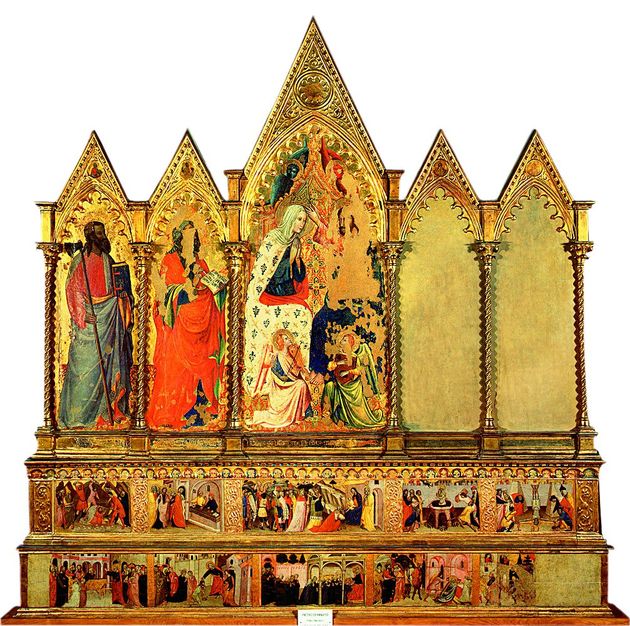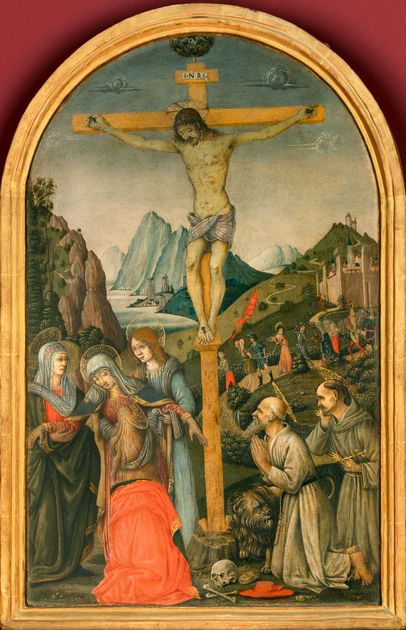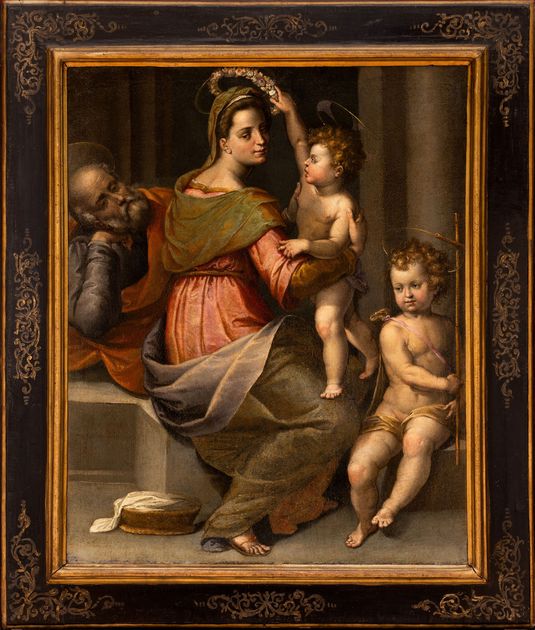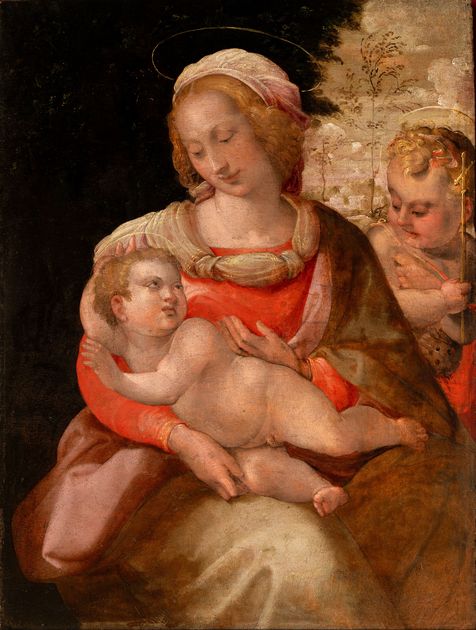Virgin Mary and Child with Saints James the Greater, John the Baptist, Andrew and Bernard; Kneeling Donors, Stories from the Lives of Saints, Baptism of Christ and Adoration of the Magi. On the cusps: Redeemer, Annunciation
Mariotto di Nardo 1424In the hall dedicated to the period between the Late Gothic and the Renaissance, this monumental work, known as the Serristori Polyptych after the name of its patron and created in 1424 by Mariotto di Nardo, is of particular note. It is a true “altar machine” on several registers: in the centre of the triptych the enthroned Virgin Mary, surrounded by angels, presents the Child and at her sides are Saints James the Greater, John the Baptist, Andrew and Bernard. On the side cusps is the Annunciation, with the Archangel Gabriel on the left and the Virgin Mary on the right, while in the centre the Eternal Father is in the act of blessing. At the bottom, as is customary, is the predella, where various scenes follow one another.











